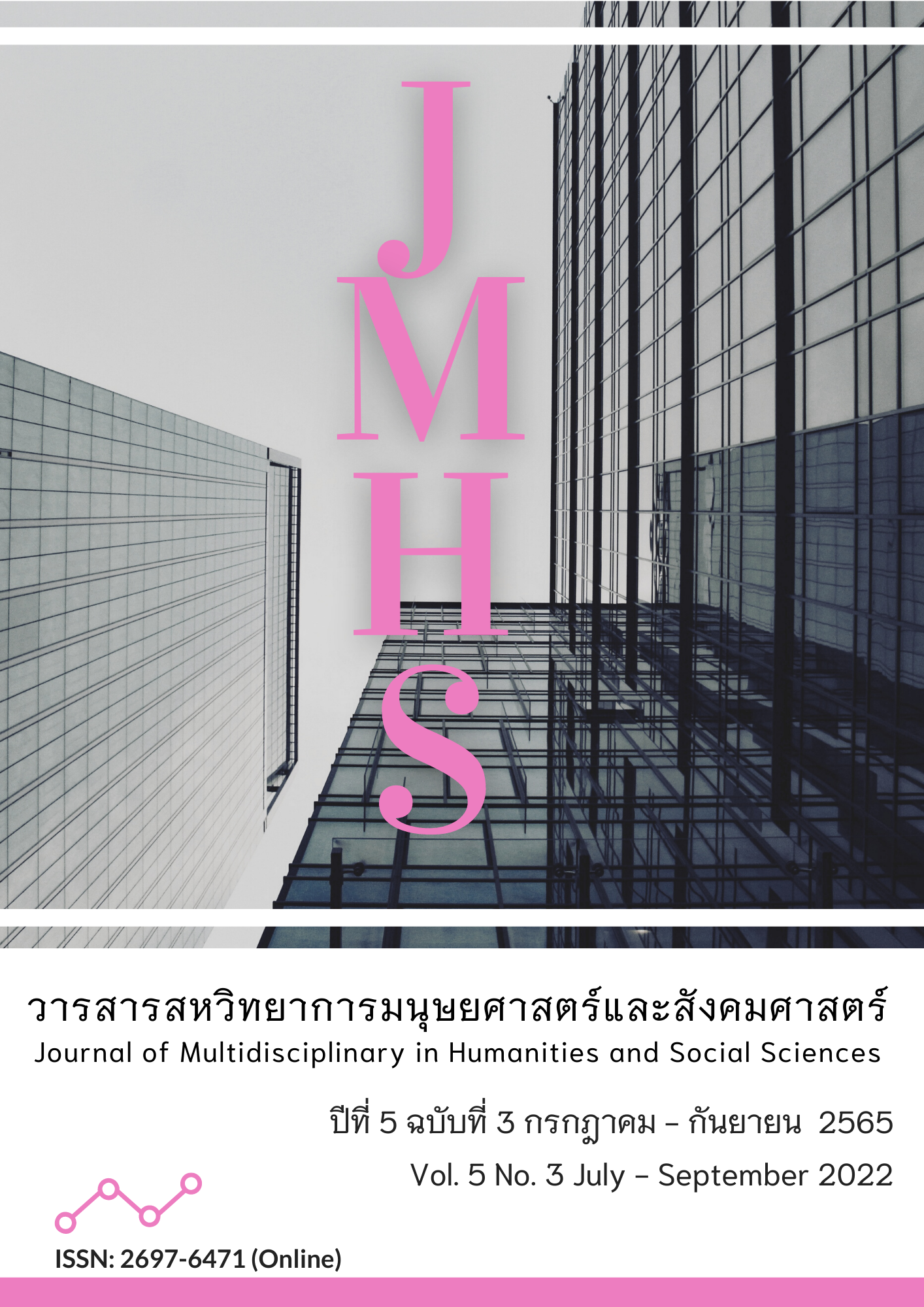The Effect of English Learning Management Based on Content and Language Integrated Learning (CLIL) Approach on Critical English Reading Ability of Mathayomsuksa 5 Students
Main Article Content
Abstract
This research had the objective to compare the ability in the English critical reading of the Mathayomsuksa 5 students, before and after receiving the learning management based on the Content and Language Integrated Learning (CLIL) approach and comparing their ability in the English critical reading after receiving the learning based on the content and language integrated learning and learning by the content. This research was quantitative research. The sampling groups used in this research were M. 5 students from Patumwan Demonstration School, Srinakharinwirot University. It used two classes, derived from the defined types in the classroom, divided into the experimental groups and the controlled group. The data collection was done by using the content and language integrated learning approach, the plan on learning by the content and measurement of the ability on the English critical reading with a reliability of 0.88, and an analysis of the data using the statistical mean, standard deviation, and t-test.
The research results found that:
1. The results of comparing the ability in the English critical reading of the Mathayomsuksa 5 students before and after receiving the learning management based on the Content and Language Integrated Learning (CLIL) approach found that M. 5 students have the ability in English critical reading higher after learning with statistical significance at .01.
2. The results of comparing the analysis on the English critical reading of the M. 5 students that received the learning management based on the Content and Language Integrated Learning (CLIL) approach and learning by the content found that the experimental group had the ability in English critical reading after learning and was higher than the controlled group with statistical significance at .01.
Article Details

This work is licensed under a Creative Commons Attribution-NonCommercial-NoDerivatives 4.0 International License.
Views and opinions appearing in the Journal it is the responsibility of the author of the article, and does not constitute the view and responsibility of the editorial team.
References
นภดล จันทร์เพ็ญ. (2553). การใช้ภาษาไทย. กรุงเทพฯ: แสงศิลป์การพิมพ์.
ภูริชญา เผือกพรหม และ ฤดีรัตน์ ชุษณะโชติ. (2563). หลักสูตรการรู้ภาษาอังกฤษตามแนวคิดการบูรณาการเนื้อหากับภาษา และการเรียนรู้โดยใช้โครงงานเป็นฐานสำหรับนักเรียนชั้นมัธยมศึกษาตอนปลาย. วารสารครุศาสตร์, 48(4), 276-297.
รุ่งระวี สมะวรรธนะ. (2561). การบูรณาเนื้อหาสุขศึกษากับการใช้ภาษาอังกฤษและเทคโนโลยีเป็นสื่อในการจัดการเรียนรู้. วารสารวิจัยและพัฒนาหลักสูตร, 8(2), 7–23.
สถาบันทดสอบทางการศึกษาแห่งชาติ. (2563). สรุปผลการทดสอบทางการศึกษาระดับชาติขั้นพื้นฐาน (O-NET) ระดับชั้นมัธยมศึกษา ปีที่ 6 ปีการศึกษา 2562. สืบค้นเมื่อ 9 พฤษภาคม 2563, จาก http://www.newonetresult.niets.or.th/Announcement Web/PDF/Summary ONETM6_2562.pdf
อรอนงค์ ตั้งก่อเกียรติ. (2542). การอ่าน: ภาษาไทยเพื่อการสื่อสารและการสืบค้น. กรุงเทพฯ: เธิร์ดเวฟเอ็ดดูเคชั่น.
Admission Premium. (2563). สรุปคะแนนโอเน็ตเฉลี่ย ปีการศึกษา 2561. สืบค้นเมื่อ 9 พฤษภาคม 2563, จาก https://campus.campus-star.com/onet/107392.html.
Al Roomy, M. A. (2022). Investigating the Effects of Critical Reading Skills on Students’ Reading Comprehension. Arab World English Journal, 13(1), 366–381.
Albeckay, E. M. (2014). Developing Reading Skills through Critical Reading Programme amongst Undergraduate EFL Students in Libya.
Procedia - Social and Behavioral Sciences, 123, 175–181.
BinSaran, A. A. (2021). Use of Content and Language Integrated Learning (CLIL) for Teaching Reading Skills in Saudi Universities. Published by Canadian Center of Science and Education, 14(8), 1–7.
Coyle, D., Holmes, D., & King, L. (2009). Towards An Integrated Curriculum - CLIL National Statement and Guidelines. London: The Languages Company.
Marsh, D. (2002). CLIL/EMILE – The European dimension: Actions. Trends And Foresight Potential Public Service Contract. DG EAG: European commission.
Mehisto, P., Marsh, D., & Frigols, M.J. (2008). Uncovering CLIL: Content and language integrated learning in bilingual and multilingual education. Oxford: Macmillan Education.
Prakash, J. R., & Spoorthi, B. (2021). Gamified Content and Language Integrated Learning Approach (CLIL): An Innovative Approach for Effective Language Teaching and Learning. International Conference on Best Innovative Teaching Strategies. 141–145.
Sanad, H. A., & Ahmed, M. G. (2017). Using Content and Language Integrated Learning (CLIL) to Develop EFL Reading Comprehension Skills, Vocabulary Skills and Retention among College Students. Journal of Research in Curriculum, Instruction and Educational Technology, 3(4), 101–131.
Várkuti, A. (2010). Linguistic Benefits of the CLIL Approach: Measuring Linguistic Competences. International CLIL research Journal, 1(3), 67–79.
Verenikina, I. M. (2003). Vygotsky's Socio-Cultural Theory and the Zone of Proximal Development. University of Wollongong Research Online: https://ro.uow.edu.au/sspapers/3201/


